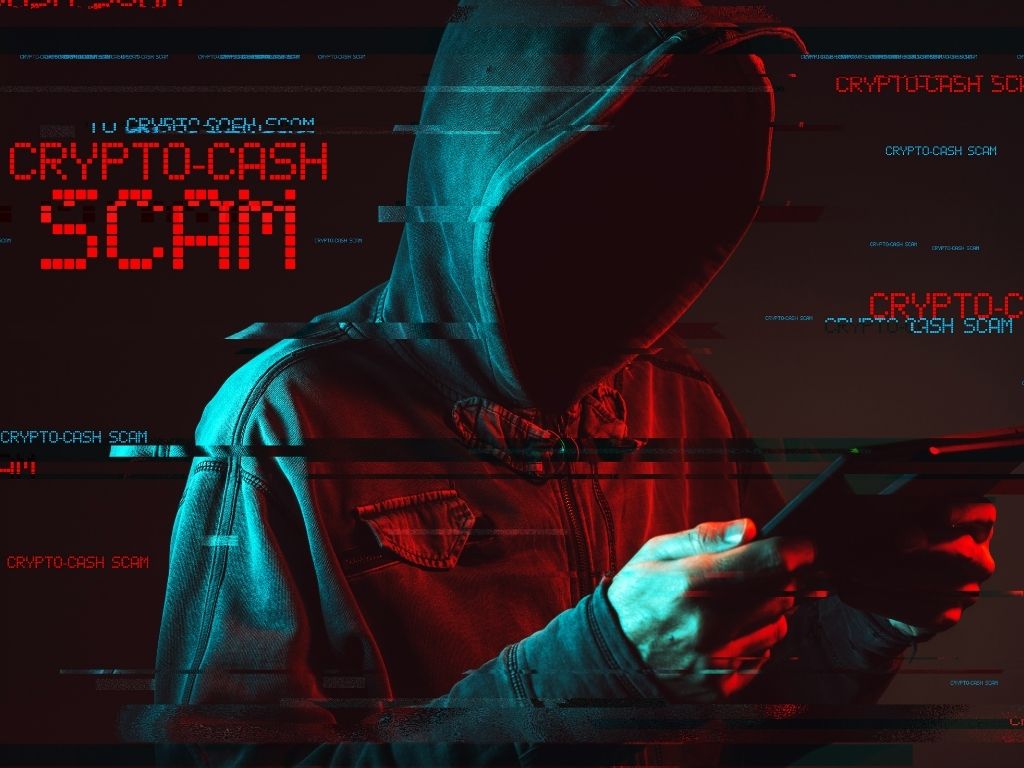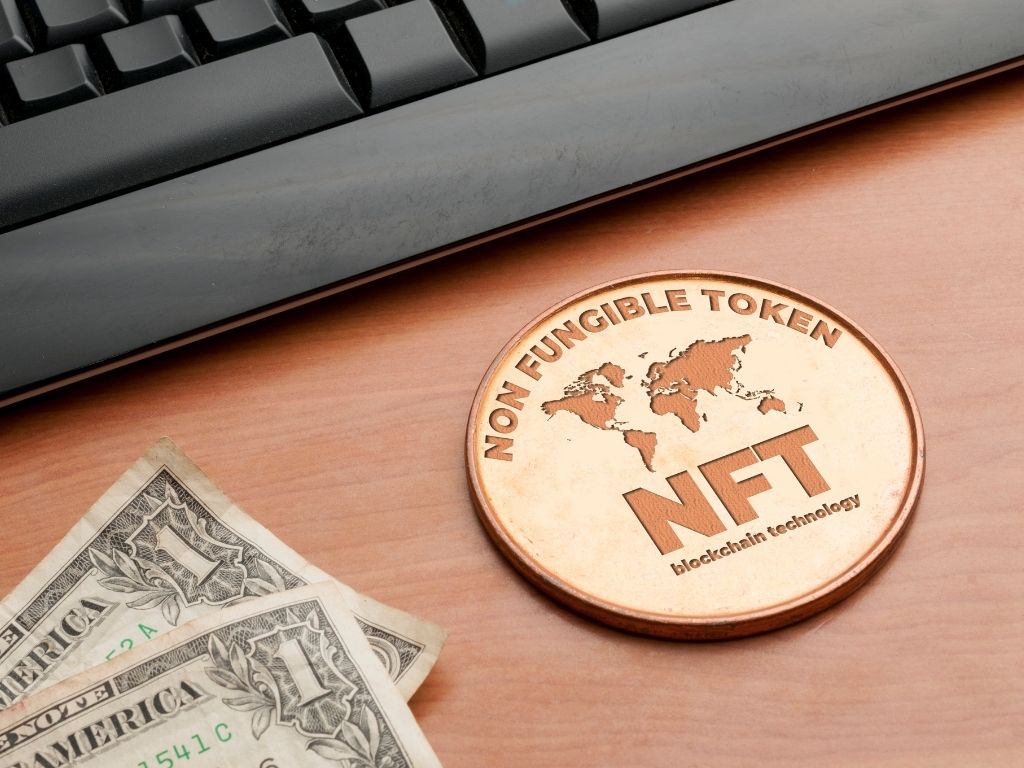Top 5 NFT Scams That Are Moving Fast And Tips To Avoid Them
Investors, brands, and companies cannot ignore this new technology, regardless of whether they support non-fungible tokens (NFTs). In 2021, the NFT market exploded, with a reported $40 billion total market value and endorsement from stars like Snoop Dogg, Mark Cuban, and Stephen Curry. Google searches for “NFT scams” reached an all-time high in early 2022, an unprecedented occurrence, as NFT popularity soared.
As more money enters the NFT sector, bad actors follow to gain an advantage over regular NFT consumers. The severity and sophistication of NFT scams have increased over the past few months, emphasizing consumers’ need to be cautious in a decentralized setting. There are many scams, and understanding how to spot them is essential if you want to stay away from them.
What exactly are NFTs?
NFTs are a particular class of cryptographic tokens representing a singular asset. NFTs serve independently verifiable evidence of ownership and authenticity within a blockchain. These tokens can represent actual things like identities, real estate, property rights, and works of art. NFTs can eliminate intermediaries, open up new markets, and streamline transactions because they are built on the blockchain.
An asset’s fungibility is the quality of having replaceable and identical component pieces. For instance, all fiat money and cryptocurrencies are interchangeable. Since NFTs cannot be traded or exchanged for equivalent value with each other, as implied by the term “non-fungible,” they bring scarcity and uniqueness into the digital world.
Common NFT Scams to Be Aware Of NFT scams can deceive you into thinking you’ve bought or sold a real NFT, or they steal private information, including your crypto wallet login information. Because NFTs have a monetary value, cybercriminals are drawn to them. As a result, they are continually refining and enhancing their standard hacking techniques, such as phishing and social engineering, to access user accounts and steal NFTs.
The five NFT scams listed below should be recognized and avoided.
Fake NFT offers are frequently sent to NFT owners via email by crooks posing as professional trading platforms. These phishing emails trick you into clicking a link to a phony NFT marketplace. The implication is that customers often have to submit their login information and a recovery phrase to link their wallet to the website to utilize these marketplaces. Keylogging and other forms of spyware are then used by con artists to remotely record your data and take your NFTs.
Verify the sender address of any email you receive from an NFT-related source to learn how to avoid falling for this scam.
1. Fake NFT projects: A rug pull scam is a technique used by con artists to produce an NFT that first appears real but is unsellable, robbing it of potential future worth. The NFT holders are left holding the bag once they learn that the asset they bought won’t value as much as they anticipated it would once they realize that the unscrupulous developers have handsomely profited from the collection’s initial sale. Thanks to this behavior.
Do your homework before investing in an NFT project, and keep an eye out for warning signs, such as a lack of creativity and an anonymous crew.
2. Bidding scams: Investors who desire to resell their purchased NFTs in a secondary marketplace may become victims of bidding frauds. Upon listing their NFT for sale, sellers risk losing money because buyers might secretly convert your preferred currency for low-value cryptocurrencies.
How to avoid falling for this con: Before selling, double check the currency being used, and never accept bids that are lower than what you had in mind.
3. NFTs that are counterfeit or plagiarised: It’s crucial to understand that simply creating a digital file doesn’t turn it into a brand-new work of intellectual property. However, because so many users are ignorant of this, con artists can deceive victims into thinking they are purchasing an exclusive NFT. Unaware consumers will erroneously make purchases on an NFT that can lose value if others find out it’s a fake. To sell their phony artwork, dishonest people will steal an artist’s creation and open a fake on an NFT marketplace.
How to avoid falling victim to this NFT scam: If possible, check the selling page for a blue verification tick to confirm the project’s legitimacy; if not, only use the links provided in the project’s official Discord to access the genuine collection on the secondary market.
Pump-and-dump schemes involve a large group purchasing a tiny, illiquid NFT collection to artificially inflate demand and price over a brief period. The original group will extract profits and drive down the collection price once enough unwary investors begin to make purchases. Unwary investors will begin to think that the NFT collection has worth and appeal once it attracts enough attention.
Review the desired NFT collection’s price history, and look for any warning signs that its rise is entirely fictitious. This will assist you in avoiding being a victim of the NFT scam.
4. Scams targeting investors: Because the NFT market is somewhat anonymous, investor scams are frequent. Scammers take advantage of this by developing projects that seem worthwhile investments before vanishing with the money they raised from interested parties. Recent instances of this scam involve an NFT developer known as “Evil Ape,” who raised approximately $3 million in funding before abandoning the Evolved Apes project.
How to avoid this scam: Confirm the identity of the project’s author and look for any history of complaints about their behavior toward others.
5. Customer service impersonation: Scammers will take advantage of NFT owners’ concerns by pretending to be customer service representatives for blockchain marketplaces and contacting unwary customers through Discord or Telegram. To solve their victims’ difficulties, these con artists build phony URLs for them to connect to and then request personal information before acquiring access to their targets’ cryptocurrency wallets.
How to avoid this con: Use the official website or social media account of the NFT author to connect to a specific Telegram or Discord server.
Top 7 NFT Scams to Look Out For / https://t.co/asRkeNaqjS#nft #nftart #nfts #nftartist #nftcollectors #nftdrop #nftnews #nftcommunity #nftcollectibles #nftartists #nftcollectio pic.twitter.com/XTxAhHRgBl
— Brainftrust (@BraiNFTrust) July 24, 2022
Why are NFT scams so widespread?
The NFT space is currently in its early phases of development; it provides neither a broad base of community support nor any governing bodies to which you may report your losses. Nevertheless, billions of dollars were still made in space. The NFT space is a perfect environment for con artists to flourish because of its decentralized nature.
The NFT market is also based on a strong feeling of community. Therefore, most NFT projects are supported by sizable Discord or Telegram groups that link NFT holders and potential buyers. This social media platform simplifies bogus individuals to snoop into chats and dupes unsuspecting users. One little moment of bad judgment is all it takes to jeopardize your prized NFTs.
How to Prevent NFT Scams
Blockchain technology grants users liberty by shifting accountability from middlemen to end users. If the infrastructure is sound, it is your responsibility if you accidentally lose money. Freedom comes with responsibility, but many people are unaccustomed to living without a safety net. Therefore, it is preferable to presume that everyone is a con artist until proven otherwise.
Do your research, steer clear of chances that seem too good to be true, and never give out your wallets or personal information to anyone.
Also, read – Here’s How to Stay Away From NFT Scams
How to Safeguard Your NFTs
NFTs should be kept in a cold-storage hardware wallet, such as Ledger, for maximum security. Hardware wallets are secured by a password and seed phrase and are always offline, preventing remote account access by hackers.
A Good Investment: NFTs
While it is true that most NFTs used today will eventually become obsolete, several NFT use cases have the potential to completely reshape the world’s digital economy. While Online 2.0 helped create the participatory web, it also gave a few digital behemoths the ability to manage and profit from user data. By giving creators and the community more ownership rights, NFTs expand Web3 and have the potential to create value. Several intriguing instances include:
Identity verification and medical records:
NFT ledgers can hold a person’s medical records without jeopardizing confidentiality.
Gaming industry: By enabling NFT cross-platform playability, NFTs can be integrated into the gaming sector. Games like Axie Infinity are already adopting these ideas, giving players an incentive to stay playing if they own the characters and stuff they use in the game.
Patents and intellectual property: NFT tokens allow users to demonstrate their rightful ownership of a piece of material.
In conclusion, investing in an asset is not a good idea simply because it has been tokenized as an NFT. Investments in NFTs are not NFTs themselves. Before making a purchase, an investor must know the worth of the underlying asset that NFT represents.
Stay informed with daily updates from Blockchain Magazine on Google News. Click here to follow us and mark as favorite: [Blockchain Magazine on Google News].
Get Blockchain Insights In Inbox
Stay ahead of the curve with expert analysis and market updates.
latest from tech
Disclaimer: Any post shared by a third-party agency are sponsored and Blockchain Magazine has no views on any such posts. The views and opinions expressed in this post are those of the clients and do not necessarily reflect the official policy or position of Blockchain Magazine. The information provided in this post is for informational purposes only and should not be considered as financial, investment, or professional advice. Blockchain Magazine does not endorse or promote any specific products, services, or companies mentioned in this posts. Readers are encouraged to conduct their own research and consult with a qualified professional before making any financial decisions. The featured image used is just a creative depiction of the title and it does not intend to hurt sentiments of any person or institution. If it hurts anyone sentiments, please do not hesitate to reach out to Blockchain Magazine.

 Bitcoin
Bitcoin  Ethereum
Ethereum  XRP
XRP  Tether
Tether  Solana
Solana  USDC
USDC  Dogecoin
Dogecoin  Cardano
Cardano  Lido Staked Ether
Lido Staked Ether  TRON
TRON  Wrapped Bitcoin
Wrapped Bitcoin  Chainlink
Chainlink  Wrapped stETH
Wrapped stETH  Sui
Sui  Avalanche
Avalanche  Stellar
Stellar  Litecoin
Litecoin  Toncoin
Toncoin  Hedera
Hedera  LEO Token
LEO Token  Shiba Inu
Shiba Inu  Hyperliquid
Hyperliquid  USDS
USDS  Polkadot
Polkadot  WETH
WETH  MANTRA
MANTRA  Bitcoin Cash
Bitcoin Cash  Bitget Token
Bitget Token  Ethena USDe
Ethena USDe  Wrapped eETH
Wrapped eETH  Uniswap
Uniswap  Monero
Monero  NEAR Protocol
NEAR Protocol  WhiteBIT Coin
WhiteBIT Coin  Pepe
Pepe  Aave
Aave  Ondo
Ondo  Bittensor
Bittensor  Aptos
Aptos  Dai
Dai  Internet Computer
Internet Computer  Official Trump
Official Trump  Mantle
Mantle  Ethereum Classic
Ethereum Classic  Tokenize Xchange
Tokenize Xchange  OKB
OKB  Gate
Gate  Sonic (prev. FTM)
Sonic (prev. FTM)  sUSDS
sUSDS 




